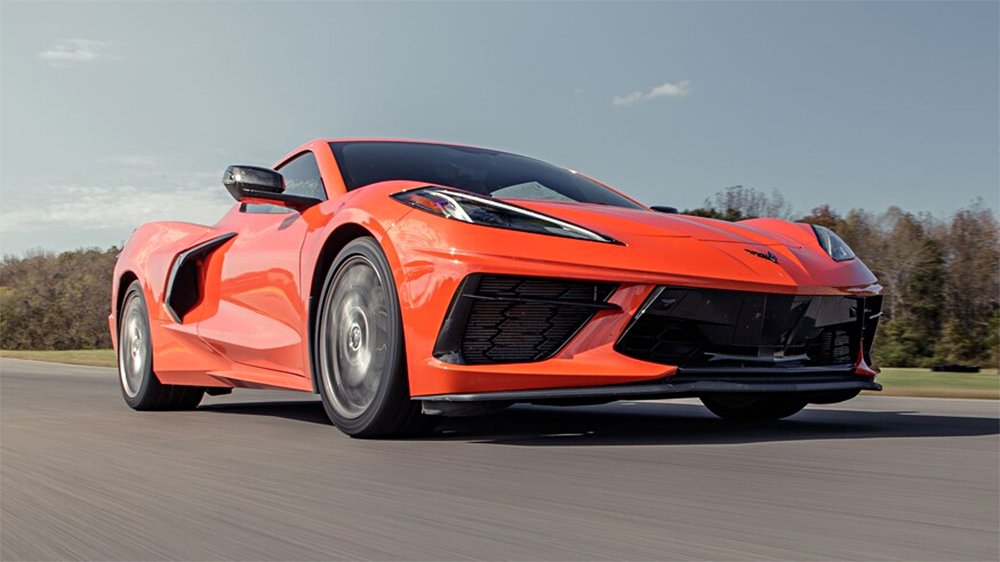Iconic Racer Randy Pobst Talks C8 Handling

American racing driver gives his take on the C8 Corvette’s handling and how it could be even better.
We have heard pretty much exclusively good things about the C8 Corvette, and its handling capabilities. Not only are people raving about how much better it feels than a C7, but the likes of some are even comparing it to high-end sports cars like the Acura NSX and Ferraris. However, no vehicle is perfect, and without someone to point out the flaws of a chassis, there’s no way to improve them.
After a review of the C8 Corvette on a figure-eight layout by Motor Trend technical director Kim Reynolds pointed out it’s understeering issues, Chevy made some camber, caster, and tire pressure tweaks and invited a host of MT staff out to test it at Virginia International Raceway. One of them is racing legend and MT author, Randy Pobst, who has over 90 wins in his professional career, including two class wins at the 24 Hours of Daytona. You could say he’s well qualified, then. In his review, he breaks down Chevy’s improvements, their effectiveness, and what he would change.

Still Not Perfect
Though the changes made did help, it seems that there are still small details that Chevy needs to work out to nail down the C8’s on-track handling. “Well, the added camber is a real aid to tire grip, spreading the corner load more evenly across the tires, which will last much longer, too, as a result. But there were a couple dynamic quirks that beg for more attention,” says Pobst
He mentions that the understeer is still present, but not as bad. Furthermore, he states that when on a racetrack, it is a lot less of an issue due to the lack of long, steady corners you’d find in Motor Trend‘s figure-eight test.
“VIR has a great majority of fast esses and 90-degree turns, with a lot less direction change. The quick initial steering response and improved shock control was very effective in these types of maneuvers,” says Pobst
His main suggestion is using the electronic diff’s locking ability more than they are. With the added stability of the diff’s work, he reckons that simply softening the front suspension or stiffening the rear will alleviate the mid-corner understeer drastically.

The Unexpected Oversteer Issue
Pobst also brings to light the C8’s tendency to have off-power oversteer in corners. Though lead Corvette Development Engineer Mike Petrucci claims there has been no mention of it from any other test drivers, Pobst is adamant that it is a problem.
“However, the handling issue that surfaced on the racetrack was that the C8’s rear could come unglued when off power—something we call trailing throttle oversteer. But applying moderate power immediately stabilizes the chassis, a very beneficial characteristic,” continues Pobst
His recommendation to Chevy is to use the electronic limited-slip differential to their advantage and tighten it up when off throttle. This is potentially an easy solution for chevy, as Z51 package cars come with the e-diff standard.

“A limited-slip is a very strong tuning device when on or off-throttle, as opposed to steady-state cornering. Tighten it up, and the car will want to go straighter and will be more predictable. I rather brashly suggested that they increase the lockup off-throttle on that wonderfully tunable limited-slip e-diff,” says Pobst.
When Petrucci told Pobst that they didn’t want to do that because they want the C8 to point to the apex mid-corner, Pobst informed them that he fears C8 owners will spin their cars out when suddenly getting off throttle mid-corner.
Pobst cites his experience racing Porsche 911s as his reasoning for thinking the e-diff could be the solution to all of Chevy’s issues. The 911 is a very tail-heavy car, and Porsche has had success controlling it’s cornering issues with fine-tuning of their electronic differentials. Overall, we think it is undoubtedly advice Chevy should adhere to. After all, he is a decorated racer for a reason. He knows what he’s talking about.
Photos: Motortrend
